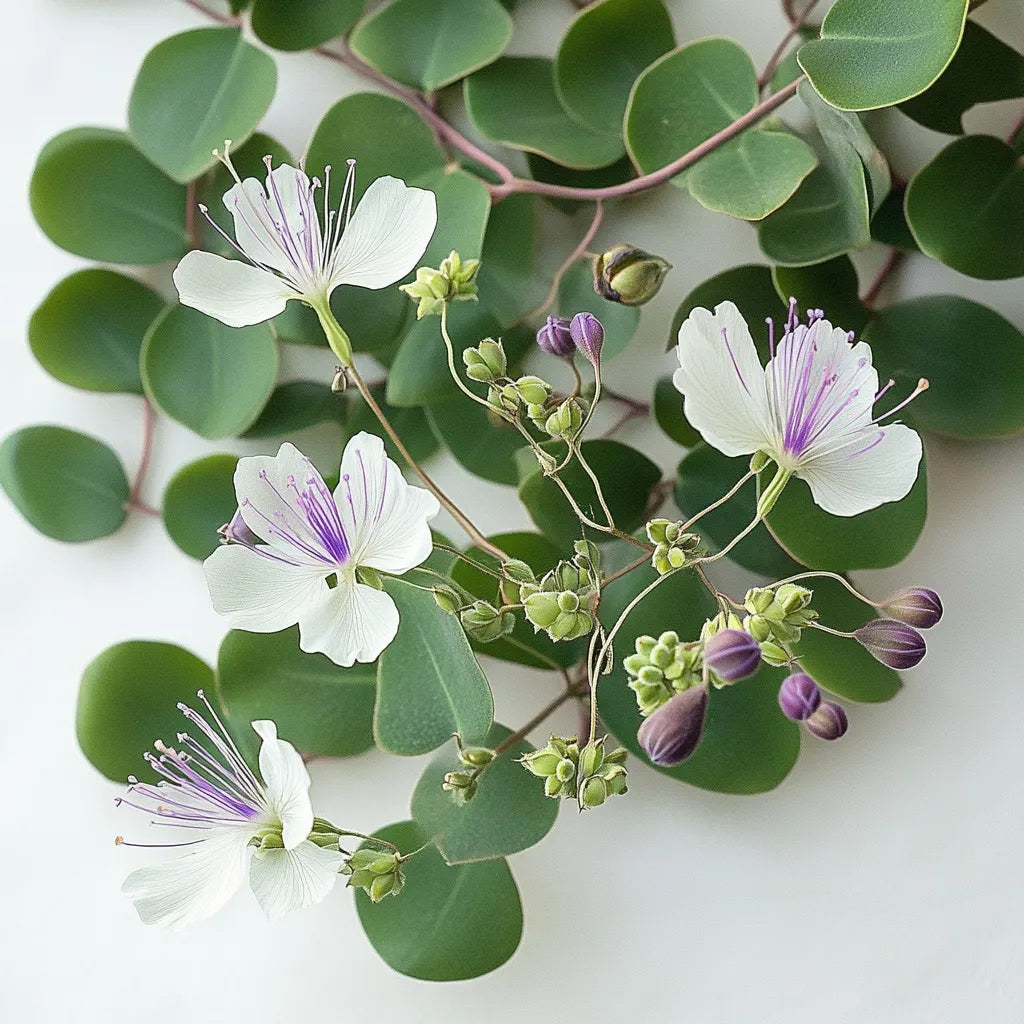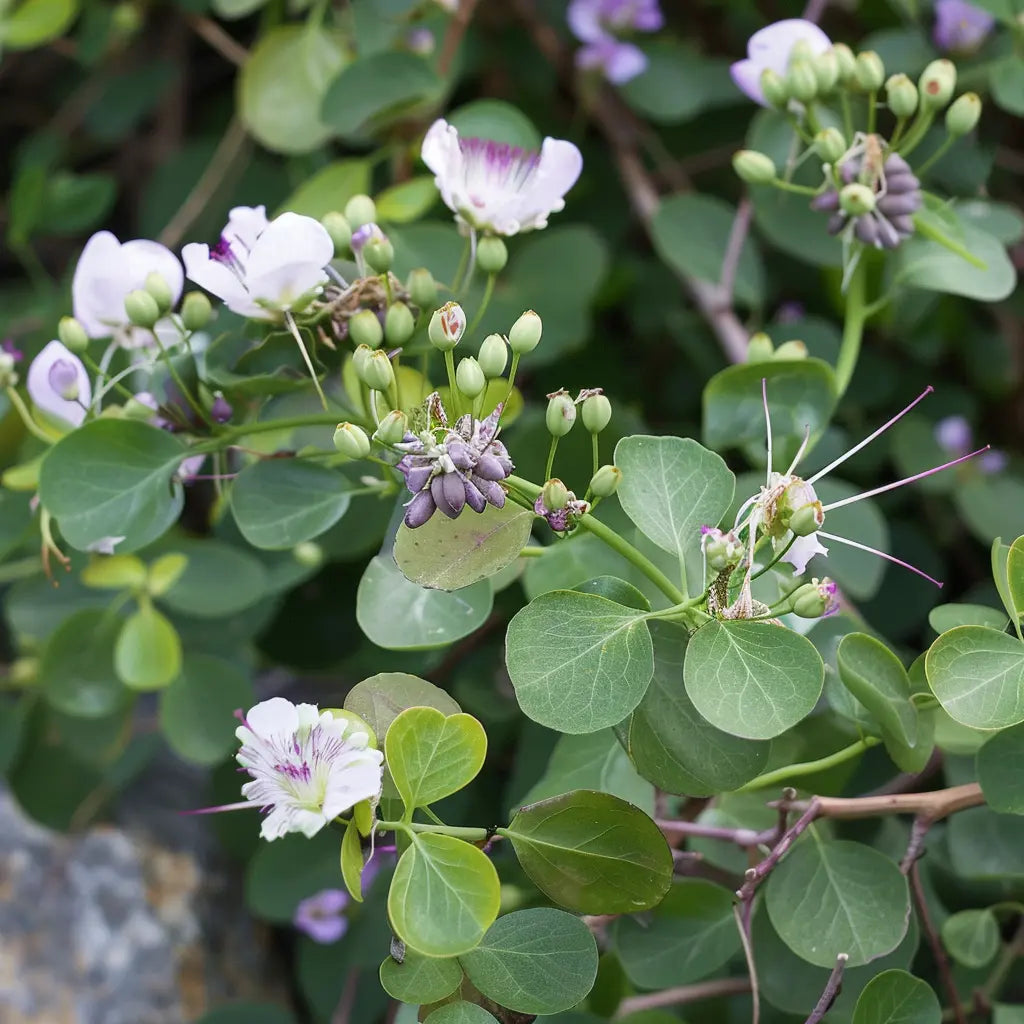Je n'ai pas encore seme les graines do Caprier et juste commence le stratification d'autres mais le tout etait envoyer dans une tres jolie petite boite et toutes les graines avait leur propre "envelope" aussi joli. J'ai vraiment hate de voir ce que le tout donne pendant les prochains 12 mois



35 Capers Seeds (spinosa)
Description
Discover the elegance and Mediterranean flavor with our thornless variety caper bush (spinosa) seeds. Here is everything you need to know to grow this unique plant in your garden:
Description:
- The caper bush spinosa is a shrubby, trailing, perennial plant. It produces either flower buds to be turned into capers or beautiful fragrant white flowers.
- The flowering is spectacular with white flowers featuring numerous purple stamens, although these flowers last only one day. The flowering period is generally in June-July.
- This plant has a spreading habit about 50 cm by 1 meter. Its trailing or spreading slender branches give it a graceful appearance.
- The caper bush is semi-hardy down to -5°C and very drought-resistant. It is suitable for hanging baskets, flower beds, low walls, fences, and dry rock gardens. It can also be grown in a conservatory or temperate greenhouse.
- Caper bush seeds generally require cold stratification to optimize germination.
Growing Conditions:
- Native to Mediterranean regions, the caper bush enjoys warmth. In France, it is recommended to plant directly in the ground only in the South. For other regions, pot cultivation is preferable, with bringing indoors to protect from cold in winter.
Commitment to Quality: At SemiSauvage - Permaculture, we are committed to providing the highest quality seeds. Our seeds are reproducible, non-hybrid, and acclimated. They are carefully selected, sorted, stored, and packaged without any chemical treatment, for the greatest pleasure of gardeners.
Transform your garden into a Mediterranean corner with these 35 caper bush seeds. Enjoy its elegant flowers and tasty flower buds to add a Mediterranean touch to your outdoor space.






